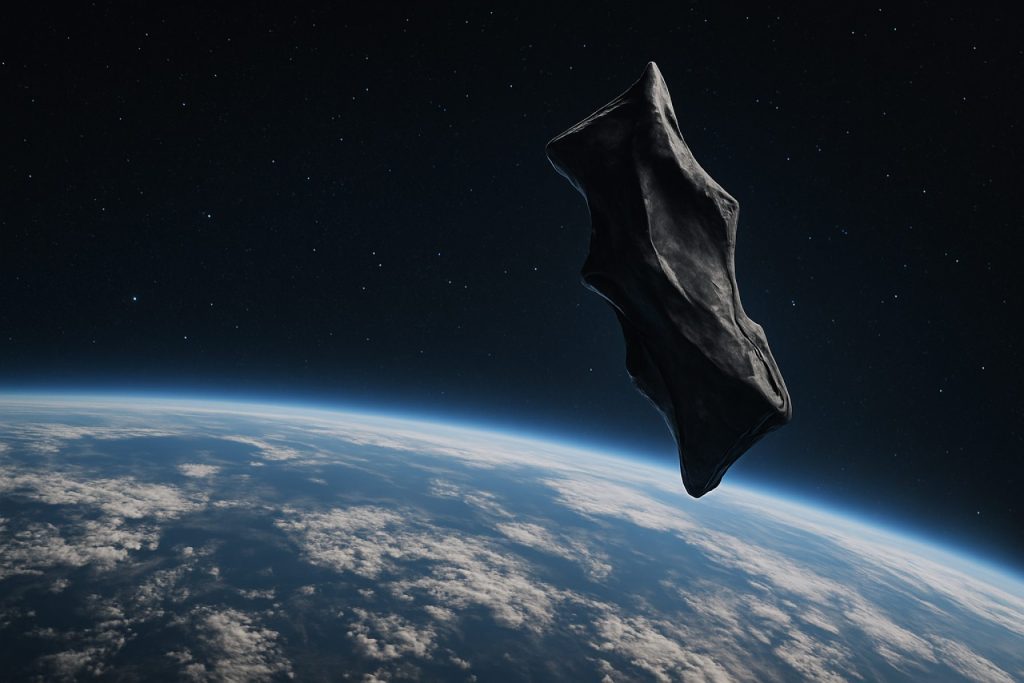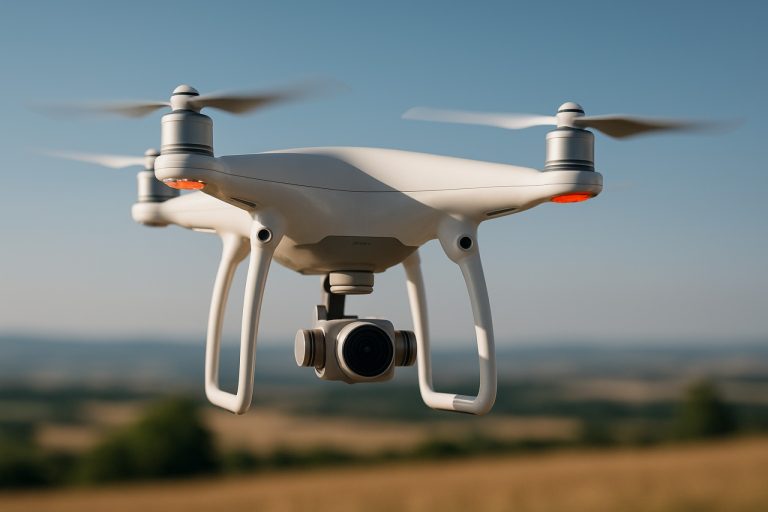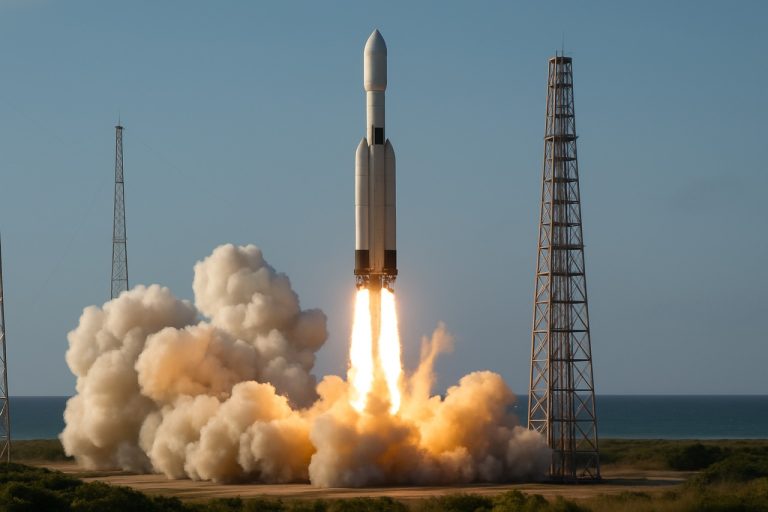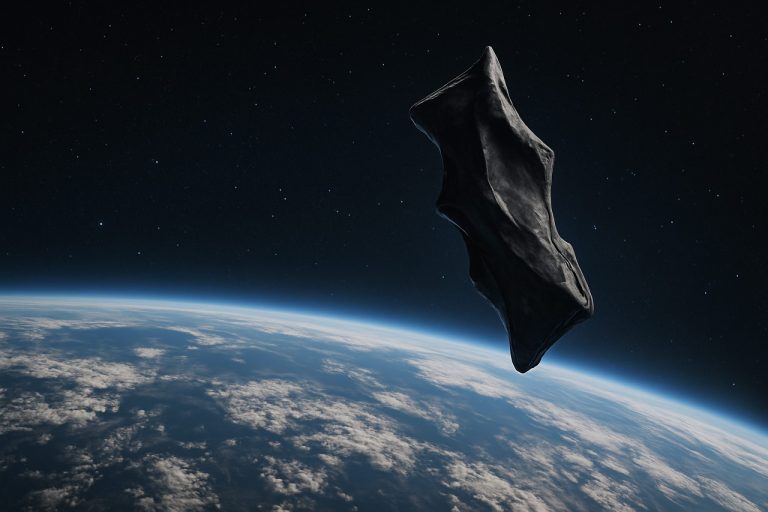
Inside the Black Knight Satellite Conspiracy: Investigating the Enigma of an Alleged Alien Relic
- Overview of the Black Knight Satellite Phenomenon
- Technological Developments in Space Observation and Satellite Tracking
- Key Players and Influencers in the Black Knight Satellite Discourse
- Projected Trends in Public Interest and Research on Space Anomalies
- Global Perspectives and Regional Interest in the Black Knight Theory
- Emerging Theories and the Future of the Black Knight Satellite Debate
- Barriers to Verification and Opportunities for Scientific Discovery
- Sources & References
“The Black Knight satellite conspiracy theory alleges that a mysterious object of extraterrestrial origin has been orbiting Earth for thousands of years, monitoring humanity.” (source)
Overview of the Black Knight Satellite Phenomenon
The Black Knight Satellite phenomenon refers to a popular conspiracy theory suggesting that an artificial satellite of extraterrestrial origin has been orbiting Earth for approximately 13,000 years. The legend combines a patchwork of real astronomical observations, misunderstood signals, and speculative interpretations, resulting in one of the most enduring space-related mysteries.
The story’s roots can be traced back to the late 19th and early 20th centuries. In 1899, inventor Nikola Tesla claimed to have received unusual radio signals, which he speculated could be communications from intelligent life on Mars (Smithsonian Magazine). In the 1920s, amateur radio operators reported hearing “Long Delayed Echoes” (LDEs), which some later theorists linked to the Black Knight.
The modern Black Knight narrative gained traction in the 1950s and 1960s, when newspapers reported that the U.S. Air Force and NORAD had detected unidentified objects in polar orbit—an orbit not used by any known satellites at the time (NASA). In 1960, Time Magazine reported on a mysterious dark object detected by the U.S. Navy, which was later identified as a lost piece of the Discoverer satellite program (Time).
Photographs taken by the crew of the Endeavour space shuttle in 1998 (STS-88 mission) further fueled speculation. Images showing a dark, irregularly shaped object in low Earth orbit were widely circulated online and cited as evidence of the Black Knight Satellite. NASA, however, explained that the object was likely a thermal blanket lost during an EVA (NASA).
- Key Claims: The satellite is of alien origin, has been transmitting signals for millennia, and is monitoring Earth.
- Scientific Consensus: There is no credible evidence supporting the existence of such an object; most claims are based on misinterpretations or unrelated incidents.
- Current Status: The Black Knight Satellite remains a subject of internet speculation, with no verified sightings or data supporting its existence as an alien artifact.
Despite the lack of scientific backing, the Black Knight Satellite continues to captivate the public imagination, blending space history, science fiction, and conspiracy lore into a modern mythos.
Technological Developments in Space Observation and Satellite Tracking
The “Black Knight” satellite conspiracy theory posits that an ancient, possibly extraterrestrial, object has been orbiting Earth for approximately 13,000 years, predating human space exploration. This theory has captivated the public imagination for decades, fueled by a combination of misunderstood scientific data, declassified military documents, and ambiguous photographs from early space missions.
The origins of the Black Knight legend can be traced back to the late 19th and early 20th centuries, when Nikola Tesla claimed to have received unusual radio signals, which some later speculated could be of alien origin (Space.com). In the 1950s and 1960s, reports of unidentified objects in polar orbit—an orbit not used by any known satellites at the time—further stoked speculation. The myth gained momentum in 1960 when the U.S. Department of Defense detected a “dark object” in orbit, later identified as a lost piece of the Discoverer satellite program (NASA).
Technological advancements in space observation and satellite tracking have since provided tools to debunk many aspects of the Black Knight story. Modern radar, optical telescopes, and satellite tracking networks, such as the U.S. Space Surveillance Network, can monitor over 27,000 objects in Earth’s orbit, including active satellites and debris (Space-Track.org). High-resolution imaging and precise orbital data have made it possible to identify and catalog virtually all man-made objects in orbit, leaving little room for unidentified “alien” satellites.
Photographs often cited as evidence of the Black Knight, such as those taken during the 1998 STS-88 Space Shuttle mission, have been conclusively identified as images of a thermal blanket lost during a spacewalk (Snopes). The proliferation of open-source satellite tracking tools and the transparency of international space agencies have further demystified orbital phenomena, making it increasingly difficult for such conspiracy theories to persist in the face of empirical data.
In summary, while the Black Knight satellite remains a popular subject in UFO lore, current technological capabilities in space observation and satellite tracking have thoroughly debunked the existence of a 13,000-year-old alien satellite. The story endures as a testament to the enduring allure of the unknown and the importance of critical analysis in the age of advanced space technology.
Key Players and Influencers in the Black Knight Satellite Discourse
The Black Knight Satellite conspiracy theory posits that an extraterrestrial spacecraft has orbited Earth for approximately 13,000 years, monitoring human civilization. This narrative, though lacking scientific validation, has captivated the imagination of UFO enthusiasts, alternative historians, and internet communities. The discourse around the Black Knight Satellite is shaped by a mix of early radio signal anomalies, misinterpreted NASA images, and the amplification of these stories by influential figures and platforms.
- Duncan Lunan: In the 1970s, Scottish author and astronomer Duncan Lunan analyzed long delayed radio echoes (LDEs) from the 1920s and speculated they could be messages from an ancient alien probe in orbit. Lunan’s hypothesis, published in New Scientist, is often cited as a foundational moment in the Black Knight narrative, despite his later retraction.
- Richard C. Hoagland: A former NASA consultant and prominent proponent of alternative space theories, Hoagland has discussed the Black Knight Satellite in the context of hidden extraterrestrial artifacts and NASA cover-ups. His work, including appearances on Coast to Coast AM, has helped popularize the theory among a wider audience.
- NASA and Mainstream Science: NASA has repeatedly addressed the Black Knight claims, attributing the famous 1998 STS-88 mission photographs—often cited as evidence—to a thermal blanket lost during a spacewalk (NASA). Mainstream scientists dismiss the 13,000-year-old satellite idea as a combination of misidentified objects and myth-making.
- Online Communities and Social Media: Platforms like Reddit, YouTube, and conspiracy-focused websites have played a significant role in sustaining and evolving the Black Knight narrative. Viral videos, speculative articles, and user-generated content continue to fuel public interest and debate.
- Documentary Filmmakers and Authors: The Black Knight Satellite has featured in numerous documentaries and books, such as "The Black Knight Satellite: The Untold Story" (2017), further embedding the theory in popular culture.
While the Black Knight Satellite remains a fringe theory, its endurance is a testament to the power of modern myth-making, the allure of the unknown, and the influence of key voices in shaping public perception.
Projected Trends in Public Interest and Research on Space Anomalies
The “Black Knight Satellite” conspiracy theory posits that an ancient, possibly 13,000-year-old alien spacecraft has been orbiting Earth, monitoring humanity. While mainstream science dismisses these claims as misinterpretations of space debris, thermal blankets, or natural phenomena, public fascination with the Black Knight has persisted and even grown in recent years. This section explores projected trends in public interest and research related to this enigmatic topic.
- Rising Public Interest: Online searches and social media discussions about the Black Knight Satellite have seen periodic spikes, often coinciding with viral posts, documentaries, or new “sightings.” According to Google Trends, global search interest in the term “Black Knight Satellite” has remained steady over the past five years, with notable peaks in 2019 and 2022. Platforms like Reddit and YouTube host active communities dedicated to space anomalies, with videos on the Black Knight amassing millions of views.
- Influence of Popular Media: The proliferation of streaming documentaries and podcasts on UFOs and space mysteries has contributed to sustained curiosity. For example, Netflix’s “Top Secret UFO Projects: Declassified” and History Channel’s “Ancient Aliens” have both featured segments on the Black Knight, further embedding the theory in popular culture (Netflix).
- Scientific Scrutiny and Debunking: While no peer-reviewed research supports the existence of an ancient alien satellite, the topic continues to attract attention from amateur astronomers and skeptics. NASA and other space agencies have repeatedly clarified that the so-called Black Knight is likely a combination of space debris and misidentified objects, such as the 1998 thermal blanket lost during the STS-88 mission (NASA).
- Future Research and Citizen Science: The democratization of space observation tools—such as affordable telescopes and open-source satellite tracking—may lead to more independent investigations. Citizen science platforms like Zooniverse enable enthusiasts to analyze space imagery, potentially fueling new waves of speculation or debunking.
In summary, while the Black Knight Satellite remains a fringe theory in scientific circles, public interest is projected to remain robust, driven by digital media, citizen science, and the enduring allure of space mysteries. This ongoing fascination ensures that the Black Knight will continue to be a subject of debate and curiosity well into the future.
Global Perspectives and Regional Interest in the Black Knight Theory
The Black Knight satellite conspiracy theory posits that an extraterrestrial spacecraft has been orbiting Earth for approximately 13,000 years, predating human space exploration by millennia. This theory, which blends elements of science fiction, misinterpreted historical records, and modern UFO lore, has captured imaginations worldwide, but its acceptance and interest vary significantly by region.
Globally, the Black Knight theory gained traction in the late 20th century, fueled by a combination of Cold War-era anxieties, the proliferation of space exploration, and the rise of the internet. The theory’s origins are often traced to a series of unrelated events: Nikola Tesla’s 1899 radio experiments, mysterious signals detected by amateur radio operators in the 1920s, and photographs of space debris taken by NASA during the 1960s Gemini missions (NASA). These disparate incidents were later woven together by conspiracy theorists, who claimed that the so-called Black Knight was an ancient alien probe monitoring humanity.
Interest in the Black Knight theory is particularly strong in North America and Europe, where UFO culture and skepticism toward official narratives are more pronounced. According to a 2023 survey by the Pew Research Center, 65% of Americans believe that intelligent life exists elsewhere in the universe, and 34% think that UFOs reported by the military are evidence of alien visitation (Pew Research Center). This cultural backdrop provides fertile ground for the Black Knight narrative to flourish, especially on social media platforms and in online forums.
In contrast, interest in the Black Knight theory is less pronounced in Asia and Africa, where local folklore and different cultural attitudes toward extraterrestrial life shape public perception. However, the global reach of the internet has led to a gradual increase in awareness and discussion of the theory in these regions, particularly among younger, tech-savvy populations.
Despite its popularity, the Black Knight theory has been thoroughly debunked by experts, who attribute the supposed evidence to space debris, photographic artifacts, and misinterpretations of historical data (Snopes). Nevertheless, the enduring appeal of the Black Knight conspiracy highlights humanity’s fascination with the unknown and the persistent allure of cosmic mysteries.
Emerging Theories and the Future of the Black Knight Satellite Debate
The Black Knight Satellite conspiracy theory posits that an artificial object of extraterrestrial origin has orbited Earth for approximately 13,000 years, predating human space exploration by millennia. This theory, which has gained traction in UFO and alternative history circles, is rooted in a patchwork of historical anecdotes, misinterpreted scientific data, and modern internet speculation.
The narrative first gained widespread attention in the 1950s and 1960s, when reports of unidentified objects in polar orbit—an orbit not achievable by human technology at the time—surfaced in the media. Some enthusiasts linked these sightings to earlier claims, such as Nikola Tesla’s 1899 radio experiments, during which he reported receiving unusual signals he speculated could be of extraterrestrial origin (Smithsonian Magazine).
Proponents of the Black Knight theory often cite a 1998 NASA photograph taken during the STS-88 mission, which shows a mysterious, angular object floating in space. NASA has consistently identified the object as a thermal blanket lost during a spacewalk, but conspiracy theorists argue that its shape and apparent longevity in orbit suggest a non-human origin (NASA).
Recent years have seen a resurgence of interest in the Black Knight Satellite, fueled by social media and the proliferation of digital image analysis. Some theorists claim that the satellite’s supposed 13,000-year age is supported by the “Long Delay Echo” phenomenon—unexplained radio signals with significant time delays, first reported in the 1920s. However, mainstream scientists attribute these echoes to natural causes such as ionospheric reflection (Space.com).
Despite the lack of verifiable evidence, the Black Knight Satellite remains a fixture in discussions about ancient aliens and hidden history. The theory’s endurance highlights the public’s fascination with the unknown and the potential for new discoveries in space. As private spaceflight and advanced observation technologies proliferate, future research may either debunk the myth entirely or, less likely, uncover new anomalies that reignite debate. For now, the Black Knight Satellite serves as a compelling case study in how modern myths are born and sustained in the digital age.
Barriers to Verification and Opportunities for Scientific Discovery
The “Black Knight Satellite” conspiracy theory posits that a mysterious object, allegedly of extraterrestrial origin, has orbited Earth for approximately 13,000 years. This claim, which blends misinterpreted historical data, photographic anomalies, and speculative narratives, has captured the imagination of UFO enthusiasts and conspiracy theorists for decades. However, the barriers to verifying such extraordinary claims are significant, while the process of debunking them offers valuable opportunities for scientific discovery and public education.
-
Barriers to Verification:
- Lack of Direct Evidence: No credible scientific observation or peer-reviewed study has confirmed the existence of a 13,000-year-old artificial satellite in Earth’s orbit. The most cited “evidence”—a series of photographs taken by the crew of the STS-88 Space Shuttle mission in 1998—has been identified by NASA as a thermal blanket lost during an EVA, not an alien artifact (NASA).
- Historical Misinterpretations: The theory often references Nikola Tesla’s 1899 radio experiments and the 1920s “Long Delayed Echoes” (LDEs) as evidence of alien signals. However, these phenomena have plausible terrestrial explanations, such as atmospheric conditions and radio wave propagation (Scientific American).
- Data Fragmentation: The Black Knight narrative is a patchwork of unrelated events, including Cold War-era satellite launches and amateur radio observations, making systematic investigation difficult (Space.com).
-
Opportunities for Scientific Discovery:
- Advancing Space Debris Tracking: Investigating the Black Knight claims has spurred improvements in cataloging and tracking space debris, enhancing our ability to monitor objects in low Earth orbit (ESA).
- Public Engagement in Science: The popularity of the Black Knight myth highlights the need for clear science communication and critical thinking, encouraging the public to scrutinize extraordinary claims and understand the scientific method.
- Technological Innovation: The search for anomalous objects has driven the development of more sensitive telescopes, radar systems, and data analysis techniques, benefiting both astronomy and planetary defense.
While the Black Knight Satellite remains a myth unsupported by scientific evidence, its enduring allure underscores the importance of skepticism, rigorous investigation, and the ongoing quest for discovery in space science.
Sources & References
- 13,000-Year-Old Alien Satellite? Unraveling the Black Knight Conspiracy Theory
- NASA
- Time
- Space.com
- Space-Track.org
- Snopes
- New Scientist
- Coast to Coast AM
- "The Black Knight Satellite: The Untold Story"
- Google Trends
- Zooniverse
- Pew Research Center
- Scientific American
- ESA



